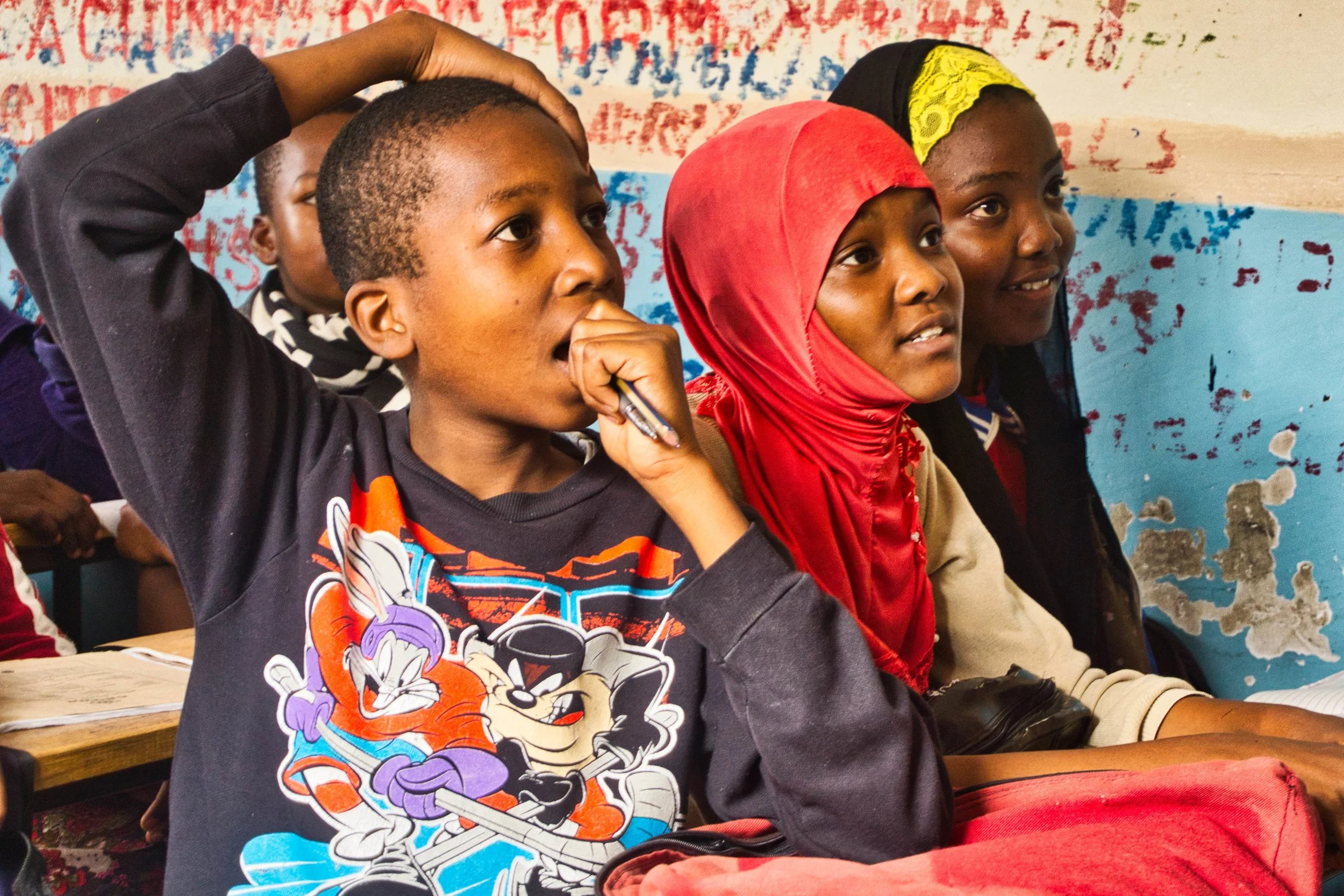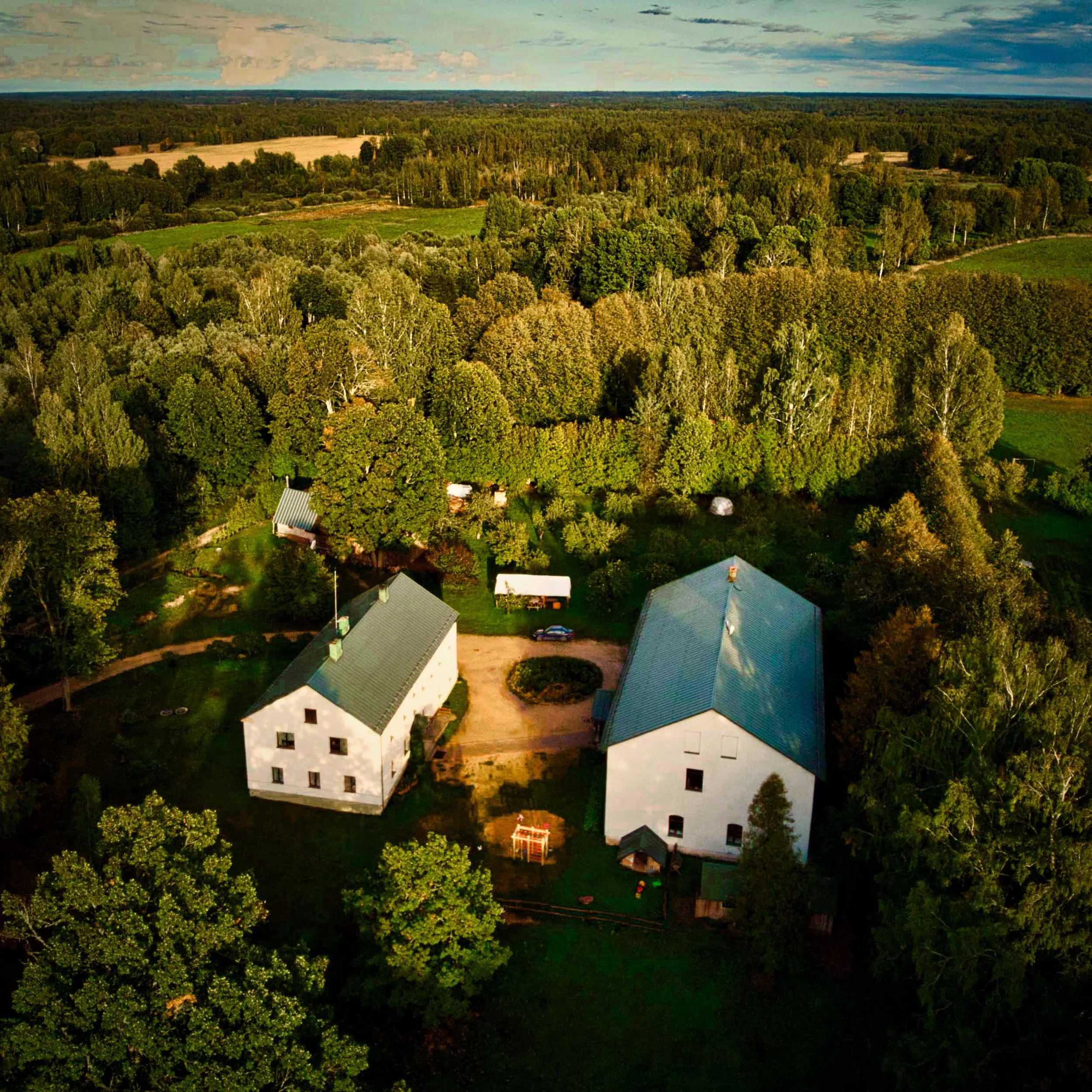Safari in Tanzania
The Bucket List
An African safari is a bucket list item for many people. As it should be. The experience of witnessing these animals in their natural and wild habitat is something that stays with you. It’s awe-inspiring when you come across a group of young cheetahs enjoying their morning kill. We all know about predators, prey and the food chain, but rarely do we get to witness it at such a personal level as it happens. You get an understanding of the hard life of an impala as they are never able to let their guard down.
Choosing a company
Travelling from Arusha, there are many companies offering safari tours. Most offer similar experiences, with the differences being in accommodation and length of your trip. As we travelled through the national parks, it was impossible to differentiate which vehicles were budget safaris and which were luxury trips. All companies follow essentially the same routes, using vehicles that are practically the same and follow the same rules for length of stay in each park. So if you’re considering a safari in Tanzania, your decision should be how many days and how comfortably you want to sleep.
In general, the largest cost for the tour is the admission to each of the parks. The tour operators have no control over these prices and there is no way to avoid them or get a discount. In fact, over 70% of the cost of our budget safari was for park admissions alone. The remaining 30% goes to the tour operator for the cost of the guide, chef, vehicle and fuel, food, accommodations and water. The profit margin is tight and it’s almost impossible to find a safari experience for under $150/day.
In the end, our group decided to go with a newer company on a four-day trip at the cost of $150/day. This included one night in a fixed “luxury” tent with a bed, mattress, mosquito net and attached private bathroom and shower. The other two nights were in a traditional pop-up tent with a sleeping bag on the ground and shared bathroom/shower facilities.
There were a few other competing companies that were close to that price, but based on as much research as possible, we concluded this company would provide us with the experience that we wanted and could afford.
A four-day trip seemed like the right length. It allowed us to see the parks we wanted to visit, and got us plenty of driving time to find the animals we hoped to spot.
Day 1
We left Arusha around 10:00 AM, after some confusion with our itinerary and payment (more on that later…). We were on the road to Lake Manyara National Park, about a two hour drive outside of Arusha. Our guide drove the vehicle and we were joined by our chef for the week.
As we drove down the highway, we saw many Maasai tribespeople herding their livestock as they grazed in the fields. Kids waved and smiled as we passed.
We arrived at the park for a quick bathroom stop and then proceeded into the park for the start of the safari! We very quickly spotted a family of baboons hanging around the side of the road, minding their own business. They all seemed unfazed by the vehicles that were passing them by. After a while, the left together and started wandering in the opposite direction away from us.
After a quick box-lunch break with a beautiful view overlooking Lake Manyara, we got back in the van to continue our exploration of the park.
Surprising sights in the first hours
What struck all of us what the lushness of the park. It was very green, almost jungle in appearance, with just the dirt roads to break up the dense vegetation.
The first big animals we spotted were a family of elephants walking through the bushes, with a baby in tow, eating the leaves and enjoying their own lunch. In truth, the elephants did not require a keen eye, as they were within 20 feet of our van and at one point walked directly in front of the vehicle as we were all snapping photos.
Lake Manyara National Park is famous for its tree climbing lions. We were fortunate to spot several of them, first at a distance through the trees, and then directly above the road sleeping on the branches overhead. It was an incredible sight to see them so close, in the perfect position to admire them quietly and take some photos.
As we travelled through the park, we got to experience animals up close at all points during the day. There were giraffes, more elephants, wildebeests, impala, various birds, monkeys and a couple skittish warthogs. Flamingoes were the only animal that we spotted at a distance, as the water level in the lake was low and far from the road. The pink hue in the distance gave them away, but not enough to really enjoy them.
Glamping on a budget safari
Following a very successful first day at Lake Manyara, we proceeded to our campsite for the night and were all pleasantly surprised at the comfortable “glamping” accommodations. We were not expecting this level of comfort on our budget safari, but we knew it was probably the only night that would be like this, so we should enjoy it.
We had a hot meal for dinner in the open air dining area, and were treated to an acrobatic and dance show afterwards. It did seem staged and not really a representation of traditional customs, but it was enjoyable nonetheless.
Day 2
The second day started with breakfast at the campsite and then our departure toward the Serengeti National Park.
Overlooking ngorogoro Crater
On our way, we stopped at the park gates to pay our fees (more on this later!) and then proceeded up to an overlook point that afforded us a spectacular view of the Ngorogoro Crater, which we would explore on our final day.
The drive down the side of the crater and then toward the Serengeti was a bumpy one, to say the least. It was over an hour of rocky, gravel roads while the driver avoided the large potholes and sharp rocks. It was what they call an “African massage” filled with swerves, and jolts along the way. We were all very happy when we reached the park gates and the road smoothed out a little bit (but still not paved). We had another boxed lunch at the information centre before starting our search for some animals.
Arriving at Serengeti national park
The Serengeti covers a massive area of land almost 15,000 sq. km. It’s impossible to reach every corner, but you will still get treated to the awe and wonder of the vast landscape and the relative ease it was to spot large migrating herds of wildebeests, zebras and even find a napping lion in the shade under a large rock.
Over 3 million wildebeests were in the process of migrating from the north to the south. That number is staggering, but believable as we were able to spot multiple massive herds up close that stretched way off into the distance as far as the eye could see.
We were even fortunate to spot a lone leopard in a far off tree eating a meal of its latest catch high up in the branches just as we were getting ready to end for the day.
Tents in the middle of the Serengeti
Our campsite for the night was located right in the middle of the Serengeti, in accommodations more like we were expecting, with self-assembled tents, a foam pad and sleeping bag to keep us warm.
Dinner was served in a communal dining area, with the other tour groups each setting up their own table and eating space. The chefs all retreated to the shared kitchen prep space and served the food at our table as night fell.
It struck us all that we were sleeping in thin tents in the middle of the Serengeti surrounded by wild animals with no barrier to protect us. We might not have given it much more thought if it weren’t for the lion calling out very near our campsite somewhere in the darkness. It was acutely clear that we were in their territory. Thankfully the lion decided to leave us alone, but we did find some paw prints the next morning in the parking lot directly adjacent to our tents.
Day 3
An early start
We all decided to get up as early as possible so that we would have the best chance to see some predators out for a morning meal. The lions and others are most active in the mornings and late afternoons, out of the heat of the sun that sends them retreating for shade.
We almost immediately spotted a pair of hyenas wandering through an open field while a pack of wildebeests gathered together in a tight defensive group. However, hyenas rarely attack a group of wildebeests as the size difference does not work in the hyenas’ favour. They just kept wandering past to the relief of the wildebeests.
We didn’t find any other animals on the hunt, but were treated to an amazing sunrise over the plains of the Serengeti that appeared to create an image straight out of the Lion King, as the orange glowing sun rose over the horizon.
Picture perfect serengeti
As we drove around, we were fortunate to spot a single female lioness resting in the middle of the dirt road. It proceeded to get up and give us an early morning show by calling out to any other nearby lions who would listen. She then wandered frighteningly close to our vehicle as a couple people scrambled to close their windows, and proceeded to jump up on a rocky outcropping. It created the perfect image for the Serengeti. It was like she was posing for us.
We were the only vehicle around for the entire time and got to enjoy our moment with the lion all to ourselves until we were ready to continue on our way.
The guides are all in constant communication with each other over the radio. Even though many of them work with competing companies, they all want their visitors to get the best experience, so if there’s a sight that is worth seeing, they will let each other know where to go. This is certainly useful for finding the best viewing points, but also can create a bit of a logjam as all the vehicles rush to the same spot and takes away a little of the feeling of the animals in their natural habitat.
a Rare cheetah sighting
However, this communication served us well for our next fortunate sighting. The whole goal of getting up early was to see a kill and the morning meal for one of the park’s predators. We were directed to a location, that we didn’t know at the time, was where there was supposed to be a group of cheetahs devouring their catch. We couldn’t see it from the road, but fortunately a nearby truck took off into the grass and found a pack of five young cheetahs, faces covered in blood, enjoying a meal of what appeared to be an unfortunate impala.
As we continued through the day, we found several more lions, but at a much greater distance, and we remarked how spoiled we had been to get as close as we did earlier in the day. Thousands of zebras and wildebeests dotted the horizon and travelled together across the plains.
Our day ended with a drive to our next campsite near the Ngorogoro Crater, which was much like our previous night with tents set up and shared accommodations with other safari groups. The night was much colder and windier our elevated site, which made for a restless night.
Day 4
Again, we decided to get up early and start our drive to the crater before sunrise to give us the best chance of seeing active animals.
A stunning sunrise
As we drove down into the crater, the sunrise was a photographer’s dream. The clouds parted just enough for rays of light to peek through covering the entire horizon. We drove slowly and admired the view of the various animals starting their day, hoping that it wouldn’t be their last.
a Pride of lions enjoying their morning
We were directed over the radio to a pride of male lions lounging in the grasses near the road. This time, we were joined by about a dozen other vehicles that were all there for the same sight. The lions were mostly just lazing around and napping, but they would occasionally get up to stretch or playfully paw at each other. One wandered down to the nearby river and disappeared down the bank. The lions would curiously look up when they heard truck approaching, but they seemed less than interested with the dozens of people snapping photos around them.
The only animal of the Big Five that we hadn’t spotted at this point was the rhino, an unfortunately rare sight after years of hunting and poaching has dwindled their numbers. We did, however, (likely) get a glimpse of one far off in the grass taking a nap. From a distance it looked like a rock, but it did occasionally move to give us at least the assurance that we were looking at a living animal. That was the closest we can to seeing a rhino, which is most likely to happen in the Ngorogoro Crater over any of the other parks we visited.
We visited the hippo pools where they were soaking calmly in the mud, while nearby zebras were cautiously getting a drink from the lake.
The Ngorogoro Crater is a fascinating ecosystem, mostly dominated by plains, but also containing peaceful lakes, rivers and groupings of trees for some shaded forest areas.
A nice goodbye appearance
As this was our last day, we returned to our campsite to have lunch, pack up and head back into town. What we didn’t expect was to be greeted by a couple large elephants inside our campsite. One was just up the hill from our tents, snacking on some leaves, while the other was in the trees causing a bit of commotion near where the groundskeepers usually worked.
It was a fitting send off for our final moments.
Final Impressions
Positives
A safari should be on everyone’s bucket list. The sheer immensity of the landscapes and the ability to get up close and personal with the while animals that inhabit them is an unforgettable experience.
Our guide was knowledgeable, personable, and worked together with other vehicles to give us the best chance at wildlife sightings and an overall great experience.
The food was tasty and prepared well by our chef, who took into account some dietary restrictions of some members of our group
The first night at the luxury campsite was a welcome surprise on our budget safari
We all felt very fortunate to experience the up-close sightings of some many animals. I don’t think we expected to see so much on our first day at Lake Manyara, but it was a highlight of the trip.
Our vehicle was comfortable and (aside from the rocky roads) allowed us to rest between parks after some early mornings.
Challenges
If you haven’t done your research, the cost of a safari is much higher than you would expect to find in a country where a minibus ride costs $0.25 and a decent meal can be had for under $4.
Our tour operator was new and not experienced with how to properly communicate simple procedures such as payment and park fees. We ended up having to pay by credit card ourselves at the park entrances to cover those fees and then pay him in cash for the remainder of the balance. If you’re travelling in a group with separate credit cards, it gets a little complicated. After stopping at an ATM on our first morning to withdraw the cash and paying him in Tanzanian shilling (the local currency) he tried to tell us that there was a conversion fee to USD, which made no sense as we were paying in the local currency. It all seemed a little disorganized and miscommunicated. In addition, we had a sixth member join our group that we weren’t aware would be coming, and we were told different itineraries for the first day. We had agreed to go to Lake Manyara, but she had been told we were going to Tarangire National Park.
It seemed that no matter how clear we had been on some specific information prior to starting the trip, these details were not communicated to the appropriate people. We had arranged for pick up at a location where we were staying, but almost an hour later than arranged and several phone calls to determine our location, we were picked up by our driver. Also, it had been discussed about dietary restrictions, but the chef needed to have it explained again when we sat down for our first lunch and many items were not appropriate. To his credit, he adapted well and provided delicious food that everyone could eat after that.
Figuring out which safari companies to use can be a challenging task. Online reviews are questionable and likely populated with friends and family five-star ratings to prop up their scores. In the end, for a budget safari, we got our money’s worth, but it was difficult to navigate the online reviews. As we learned, safari companies actually work together by sharing vehicles, guides, chefs and even customers to fill up the vehicles, which makes it even more confusing. The tour operator we booked through hired out guides from a separate company for our actual safari. Sometimes it’s just chance and luck if you get a guide that is competent and knowledgeable, since they each work with various other companies.
Conclusion
Even though the challenges seem much longer than the positives, it was really only the first couple hours on the first day that were a little frustrating. Otherwise, the trip was an unforgettable experience that was well worth the price we paid.
If you get the chance to come to Africa, Tanzania should be at the top of your list of countries to visit. It has one of the highest number of national parks of any African country, and world-famous locations that you usually only hear about in movies or on TV.

























Consistently over recent years, the Dominican Republic scores at the very bottom of the list of countries for education scores. This is something that the government has been trying to address by hiring more teachers, but still the lack of quality teacher training programs has had a negative impact on the slow progress of academic achievement.